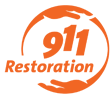Following the extreme weather and flooding in Missouri over the weekend and into the morning of Dec. 28, Governor Jay Nixon has declared a State of Emergency. More than 180 roads have been closed due to unsafe weather conditions, and while the active rainfall is predicted to end by 9pm tonight, everyone in flood-affected areas are highly encouraged to avoid travel if possible.
If you or someone you know has been affected by the widespread flooding and are in need of information, shelter, or referrals, an emergency service number has been set up throughout the state. Simply dial 211 for United Way, or refer to the information sources listed below.
Tips on what to do before, during, and after a flood can be found at the bottom of this page as well.
Emergency Phone Numbers
Emergencies: 911
Highway Patrol: (800) 525-5555
Environmental Emergency Response: (573) 634-2436
*To avoid jamming the phone systems, we urge anyone who is not in an immediate emergency to refer to the websites and contact information listed below.
Local Disaster Information
- Missouri Emergency Management Agency
- Missouri State Highway Patrol
- Missouri State Water Patrol
- Federal Emergency Management Agency (FEMA) Regional Office
Local Relief Organizations
- American Red Cross
- Salvation Army – Eastern Missouri
- Salvation Army – Western Missouri
- 911 Restoration of Kansas City Metro
Twitter Handles Covering The Disaster –
Official Hashtag – #missouriflooding
- @NOAA
- @FEMA
- @GovJayNixon
- @MoGov
- @weatherchannel
Tips for Before, During, and After a Flood
Before a Flood: Prepping and Being Prepared
Severe weather disasters such as flooding can be extremely scary events, but with some preventive prepping and general preparation of your home, you and your family can minimize the potential damage. Here are 5 things you can do to prepare for a flooding disaster:
- Utilize the Red Cross – The Red Cross is your go-to resource for all things emergency and disaster relief related in your area. Go here to find your local chapter and find more information on disaster relief.
- Create a Disaster Survival Kit – You should also have a disaster survival kit created in case of an emergency like a tornado or hurricane. Include non-perishable food, bottled water, flashlights, batteries, candles, and a first aid kit. Don’t forget to grab important emergency contact information and insurance documents, as well as medications.
- Secure your Valuables – Secure both personal possessions as well as the home itself. Move furniture, valuables, and important documents to a higher level in your home, such as the second floor. For safety purposes, shut off the main power supply, unplug electronics, and move hazardous materials to higher ground. Also, secure any outdoor items or furniture that may be picked up by high winds. If you have a mobile home, make sure it is anchored.
- Protect your Pets – In addition to protecting yourself and your family, make sure to take care of your pets. If your pet remains with you, bring enough food to last through the emergency and remember any pet medications as well. If you need a safe place for your pet to stay during a disaster emergency, you can find a local shelter at PetFriendlyTravel.com
- Stay Informed – Information is power and during a disaster, this is certainly the case. In addition to using the Red Cross website, download the free Red Cross Emergency App on your iPhone or android smartphone. Remember to bring your phone charger with you if you decide to evacuate.
During a Flood: Staying Safe
Once flooding occurs, the focus should shift to safety. Floods are extremely dangerous and life-threatening emergencies so the best tip we can give you is to always put the safety of you and your family first. During a flood emergency:
DO
- Relocate your family to higher ground. An attic or top floor of your home is much safer during a flood. If you become stranded on the road, seek higher ground on top of your car but be prepared to abandon it as well if water currents begin to move your vehicle.
• Stay updated on the storm, even if the power goes out. This may mean investing in a battery-powered radio or television. Also, download the Red Cross app.
• Let family members and friends know that you are safe by registering online at Safe and Well.
• Call the Red Cross Emergency Response at (843)764-2323
• Go to an American Red Cross Reception Center or Shelter if you’re displaced or if you’re evacuating and need a safe place to stay.
DON’T
- Drive. If possible, avoid driving altogether. This is because when a flash flood strikes it happens fairly fast, resulting in roadways becoming unsafe and completely submerged in unsanitary flood water. Communicate with your employer if heavy rain or flooding causes roadways to close.
• Panic, especially if you’re a parent. If you’re experiencing a true emergency call 911 or call Emergency Response at (573) 634-2436
After a Flood: Recovery and Relief
Experiencing a severe weather event like a flood is a traumatic experience but sometimes, the aftermath is just as stressful. After a storm and specifically a flood the focus shifts to recovery and restoration efforts.
Floods and Water Damage
A severe storm can cause flooding, down power lines, uproot tree roots that damage plumbing and pipes, as well as lead to countless other forms of water damage:
- Category 1 Water, which is any water that comes from a water supply line like a bathtub or sink and doesn’t pose a significant health threat to humans
- Category 2 Water, which is water that contains harmful contaminants and microorganisms like a toilet bowl that have the potential to make humans sick
- Category 3 Water, which is the most dangerous form of water because it contains extremely harmful bacteria and fungi that can cause sickness, disease and even death if ingested
Once rain or flood water penetrates porous surfaces of your home or business you’ve got anywhere from 24-48 hours to address the water damage before your property and possessions become at risk for mold infestation and other health problems.
Floods and Mold
Stagnate water is a breeding ground for bacteria, mold, mildew, and other unwanted fungus so fast response to water damage is essential. Additionally, consumption of it or even exposure to it can lead to severe health risks including:
- Allergies
- Asthma
- Respiratory problems
- Difficulty breathing
- Disease
- Death
If the flood water inside your home is from an unsanitary source such as an overflowed river or sewage system, you and your family are much more at risk for a mold outbreak. That is because water is categorized based on the source and category 3 water is highly susceptible to bacteria and fungus growth.
Once a bacteria or fungus infestation develops, mold inspection and remediation by certified professionals will need to take place as soon as possible in order to mitigate the mold damage. Let 911 Restoration of Kansas City Metro be the calm after the storm. For a fresh start in your home or business, give one of our flood experts a call at (816)533-3072 today.


